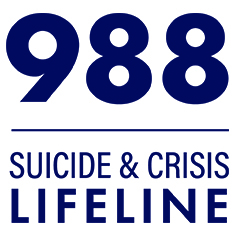Preventing Suicide in Primary Care: A Newly Updated Toolkit
February 09, 2018

Elizabeth Tupa, PhD; Adam Chu, MPH
Primary care is a key setting for suicide prevention. Research has shown that individuals who die by suicide are more likely to have seen a primary care provider (PCP) than a mental health care professional shortly before their death.1,2 People often feel more comfortable accessing mental health care in primary care settings, so PCPs may have more frequent contact with individuals at risk for suicide,3,4 presenting more opportunities for intervention. This is especially important for middle-aged and older men, who are vulnerable to suicide risk and less likely to seek mental health care.5 In rural areas, PCPs have an even more critical role in suicide prevention as they may be the only health care provider accessible to those at risk. However, PCPs may not have the training or resources to treat patients at risk, so providing them with the relevant information and support is critical.
How can primary care practices take action to prevent suicide among their patients? The Western Interstate Commission for Higher Education Mental Health Program (WICHE MHP) and SPRC have collaborated to bring primary care staff a comprehensive yet easy-to-use resource to help answer that question. The Suicide Prevention Toolkit for Primary Care Practices provides information, resources, and tools to support primary care practices in their suicide prevention efforts. First developed in 2009, the toolkit has been updated to align with Zero Suicide, a nationally recognized framework for providing safer and more comprehensive suicide care in health and behavioral health care settings. The updated toolkit contains the following:
- A quick start guide that walks PCPs and office staff through the step-by-step development of a comprehensive yet streamlined strategy to help save patient lives.
- An implementation checklist to help ensure that efforts are organized and thorough.
- A primer that contains up-to-date facts and figures on suicide in the U.S., along with straightforward clinical information and guidance on suicide screening, assessment, safety planning, and hospitalization.
- Patient management tools, including pocket-sized cards and templates to facilitate patient assessment and intervention.
- A section on state resources, policy, and reimbursement that provides tips on how to maximize reimbursement for mental health and suicide-related services. It also includes information on integrating primary and behavioral health care, and how available Medicaid reimbursements can help facilitate that process.
- New content on health care provider self-care and physician suicide.
- Patient education tools and other resources, including suicide prevention awareness materials and websites that coach families in making their homes suicide safe.
Whether a primary care practice is treating an adolescent struggling with a crisis, a veteran suffering from post-traumatic stress disorder, a middle-aged worker with depression and alcohol dependence, or a lonely older adult, this toolkit provides the information and resources needed to prevent suicide. The toolkit is designed to stand on its own, but orientation and training are also available for those who wish to take advantage of it. One survey found that PCPs who completed a toolkit training were more likely to agree that they had sufficient skills to assist suicidal patients, compared to before the training. Participants were also more likely to feel comfortable discussing suicide with their patients, and more likely to agree that implementing a suicide prevention program in their practice would help reduce suicide in their community. Toolkit hard copies, pocket guides, orientation, and training are available by contacting WICHE MHP at 303-541-0311 or mentalhealthmail@wiche.edu.
WICHE MHP and SPRC are excited to launch this updated toolkit. To effectively prevent suicide, we must meet individuals “where they are” in the health care system, and that means addressing suicide risk in primary care. We hope that this resource will help guide primary care practices in developing suicide prevention strategies and provide resources and support to PCPs caring for and treating at-risk patients.
Elizabeth Tupa is director of education and research in the Mental Health Program at the Western Interstate Commission for Higher Education.
Adam Chu is senior project associate in SPRC’s Health and Behavioral Health Initiatives at Education Development Center.
References
- Ahmedani, B. K., Simon, G. E., Stewart, C., Beck, A., Waitzfelder, B. E., Rossom, R., . . . Solberg, L. I. (2014). Health care contacts in the year before suicide death. Journal of General Internal Medicine, 29(6), 870–877.
- Luoma, J. B., Martin, C. E., & Pearson, J. L. (2002). Contact with mental health and primary care providers before suicide: A review of the evidence. The American Journal of Psychiatry, 159(6), 909–916.
- Alang, S. M. (2015). Sociodemographic disparities associated with perceived causes of unmet need for mental health care. Psychiatric Rehabilitation Journal, 38(4), 293–299.
- Corrigan, P. W. (2004). How stigma interferes with mental health care. American Psychologist, 59, 614–625.
- Suicide Prevention Resource Center. (2016). Preventing suicide among men in the middle years: Recommendations for suicide prevention programs. Waltham, MA: Education Development Center.
